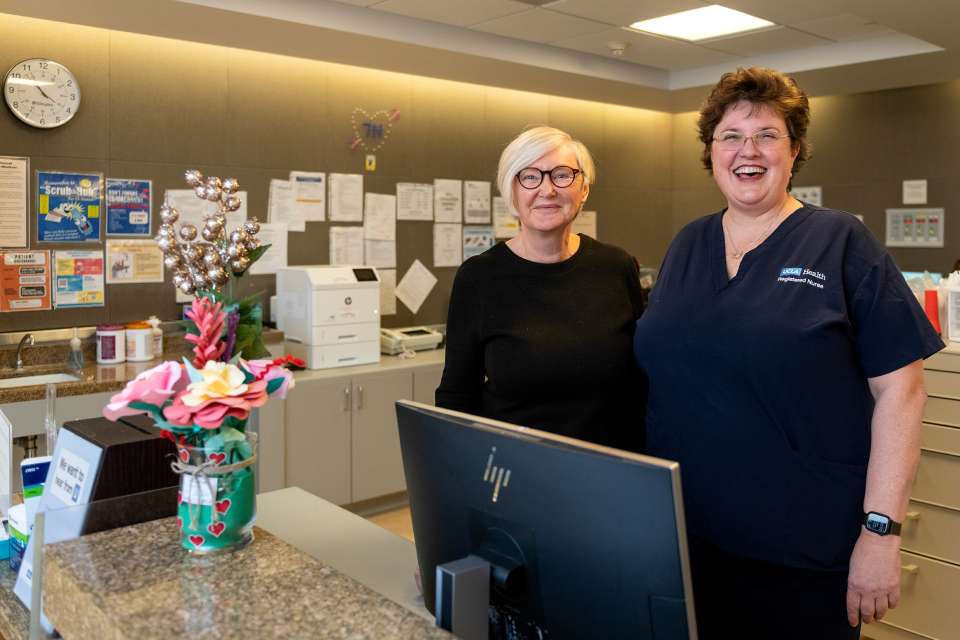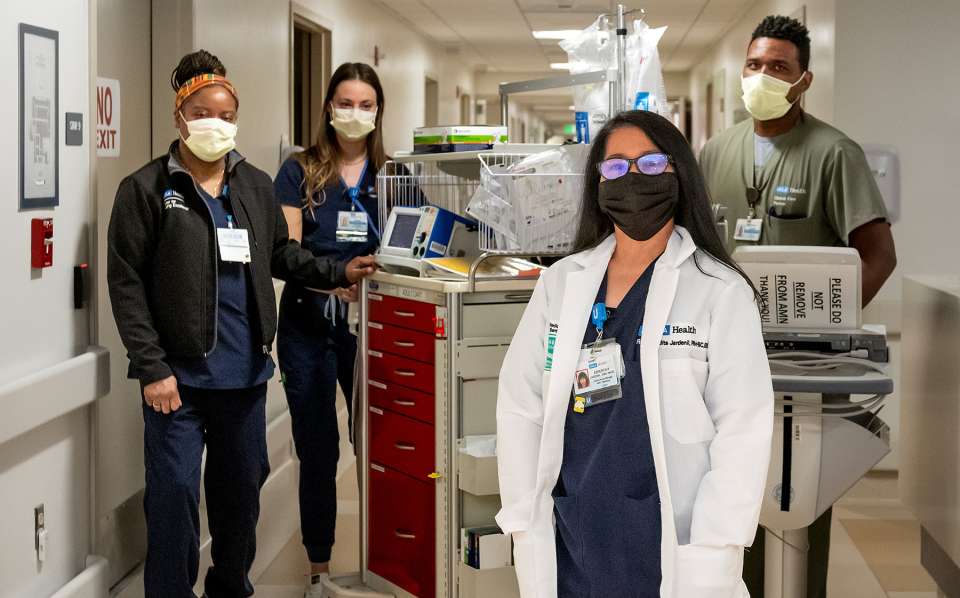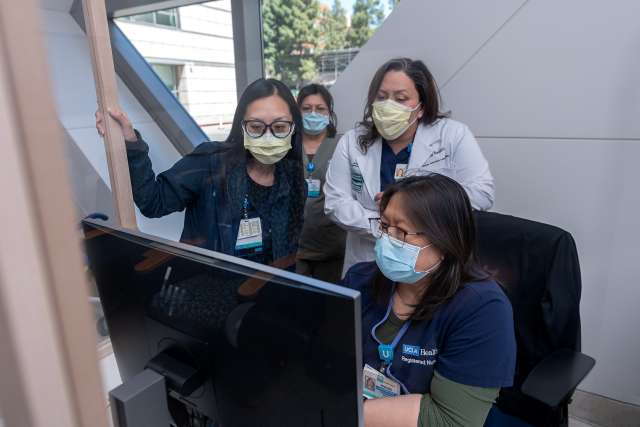Throughout the COVID-19 pandemic, health care systems across the country experienced staffing crises as nurses left the profession in record numbers. That wasn’t the case, however, at UCLA Health, where staffing ratios have remained stable in spite of multiple surges of the virus. “Nurses were interested in coming to work for UCLA Health, so we were able to maintain our staffing ratios throughout COVID,” says Elizabeth Maister, BSN, MBA, RN, NE-BC, senior director of Nursing Business Systems at UCLA Health.
Maister credits the nursing service float team (NSFT) — a collective of per diem nurses and care partners who work as needed — as a contributing factor to the health system’s ability to maintain staffing. Between fiscal years 2020 and 2021, UCLA Health increased its float team workforce from 649 to 840; there currently are 863 staff on the team. Additional highlights include:
Staffing model improvement
- Nursing administrators factored operational vacancy rates due to prolonged COVID-19-related illness and extended time to hire and train new staff into the operational budget to enable the hiring of additional nurses to maintain nurse-to-patient ratios in line with state requirements and patient care needs.
Certification & training
- 44% of NSFT nurses are certified in their specialty;
- 132 ICU nurses hold professional certification;
- 87 med-surg nurses hold professional certification;
- 12 pediatric nurses hold professional certification; and
- 134 certified nursing assistants have attended Crisis Prevention Institute (CPI) training.

Accomplishments
- Initiated a University of California-wide annual float-pool recognition week in September 2022;
- Introduced a new graduate nurse cohort into NSFT;
- 20 NSFT nurses actively participate on Professional Governance Councils;
- NSFT RNs were cross-trained to provide care to inpatient pediatric units and patients in Resnick Neuropsychiatric Hospital at UCLA;
- Five of seven domains exceeded national average on 2022 Press Ganey Nursing Excellence Survey;
- Newly opened UCLA Santa Monica Medical Center Discharge Lounge managed and staffed by NSFT;
- Newly initiated Ronald Reagan UCLA Medical Center Shared Bed Liaison Program managed and staffed by NSFT;
- NSFT facilitated staffing of newly implemented immediate care clinic; and
- 50,568 shifts filled by RN NSFT in 2022.
Cross-training in ECMO
The COVID-19 pandemic presented many unique challenges. Not only did the total number of patients requiring care increase significantly, but escalated levels of patient acuity required innovative treatment strategies such as extracorporeal membrane oxygenation (ECMO).
ECMO takes over the work of the patient’s heart and lungs, giving the native organs time to heal. In late 2021, the first class of 53 advanced ECMO nurses completed training, adding to the cohort of respiratory therapists and perfusionists trained in this highly technical and complex level of care. At the time, the ECMO center in UCLA Health’s Cardiac Intensive Care Unit had an average of 12 ECMO patients a day, the majority of whom were there due to COVID-19.
“It was a different story in 2022, however,” says Ida Anderson, MSN, RN, NEA-BC, ONC, director of nursing in Adult Critical Care at UCLA Health. “The surge in patients shifted across all areas of ICU.”
Fortunately, Anderson and her staff were able to quickly pivot, pulling nurses from the ECMO center to work the floor and hiring an additional 300 ICU nurses to fill shortages.

“We increased FTE (full-time equivalent) positions by approximately 10% per unit. That’s a huge number of people to onboard,” she says, adding that training for each position takes about three months.
Meanwhile, cross-training on the ECMO circuit continued. “The nurses have talked about how it has been revitalizing to have an additional skill,” Anderson says.
Nurses have remained dedicated to providing high-quality care. “They’ve stayed focused on why they’re here, which is to deliver the best care they can for every patient,” Anderson says.
Jennifer Karmarkar is the author of this article.
